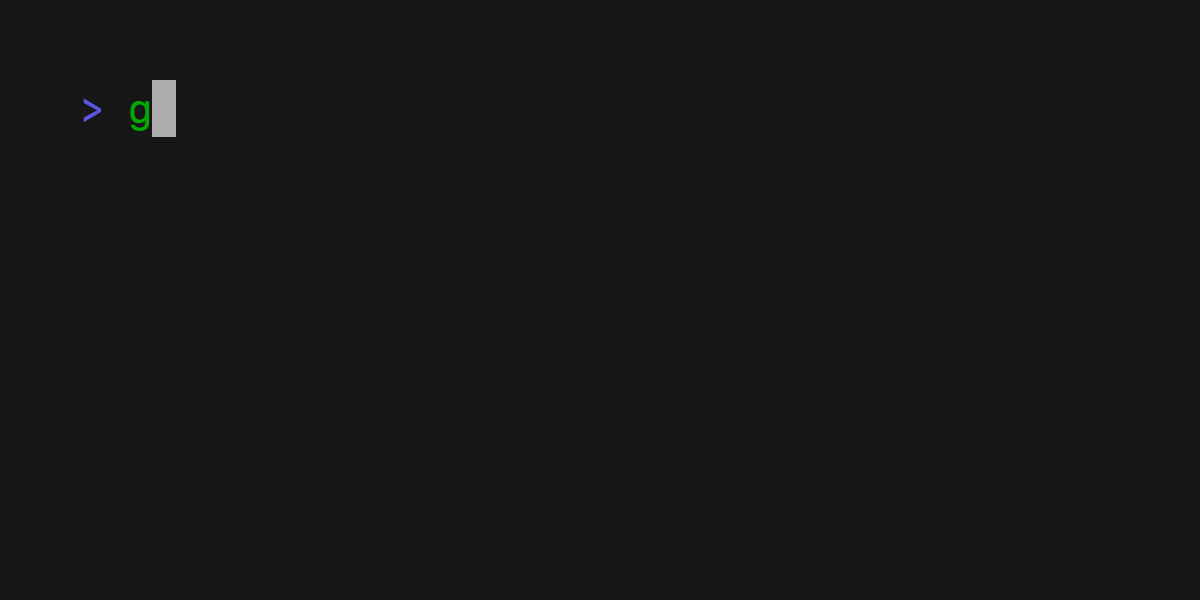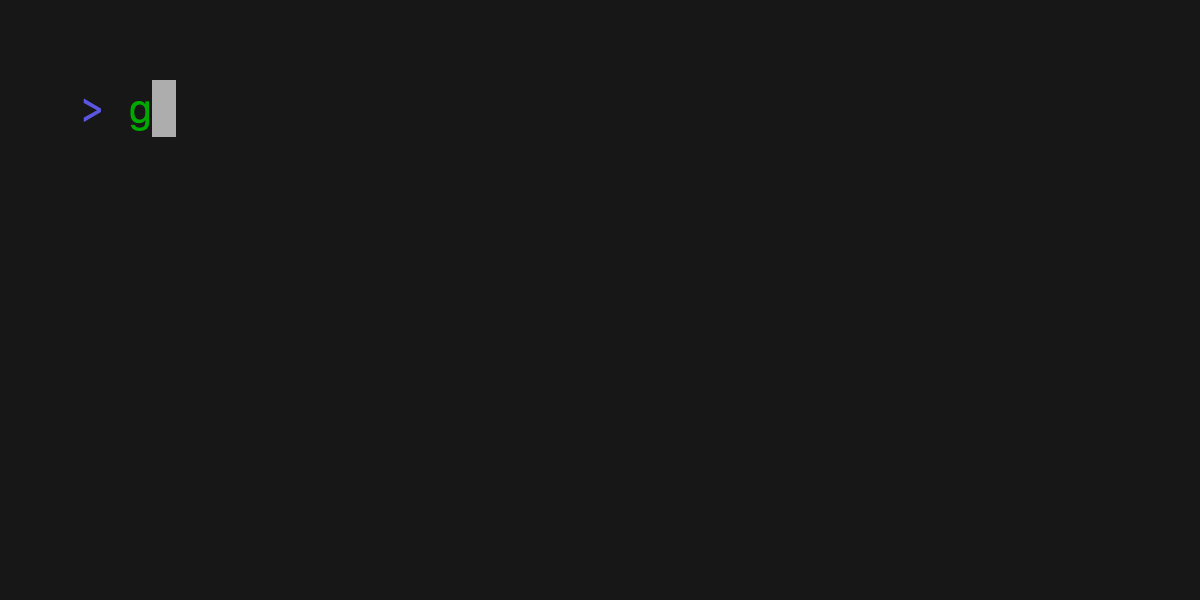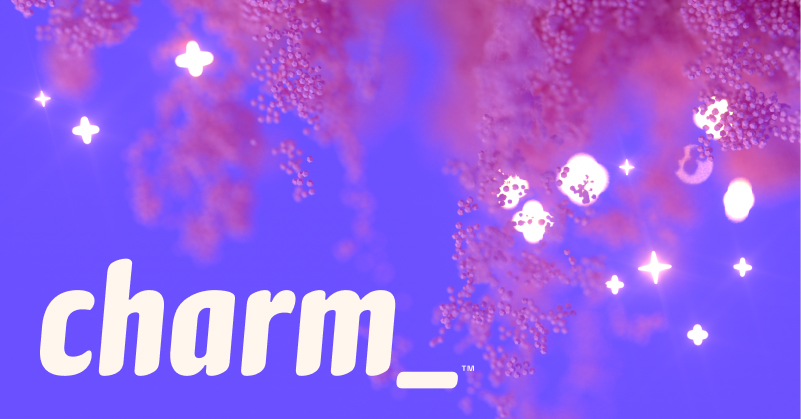10 KiB
Gum
Gum is a collection of command-line utilities that make your shell scripts a little more glamorous. It gives you the power of Bubbles and Lip Gloss without needing to write any Go code.
# Prompt users for input
NAME=$(gum input --placeholder "What is your name?")
# Style some text
gum style --foreground 212 --padding "1 4" \
--border double --border-foreground 57 \
"Nice to meet you, $NAME."
# Do some work while spinning
gum spin --title "Taking a nap..." --color 212 -- sleep 5
# Fuzzy find a file or directory
find . -type f | gum filter
The following example is running from a single bash script.

Installation
Use a package manager:
# macOS or Linux
brew tap charmbracelet/tap && brew install charmbracelet/tap/gum
# Arch Linux (btw)
pacman -S gum
# Nix
nix-env -iA nixpkgs.gum
# Debian/Ubuntu
echo 'deb [trusted=yes] https://repo.charm.sh/apt/ /' \
| sudo tee /etc/apt/sources.list.d/charm.list
sudo apt update && sudo apt install gum
# Fedora
echo '[charm]
name=Charm
baseurl=https://repo.charm.sh/yum/
enabled=1
gpgcheck=0' | sudo tee /etc/yum.repos.d/charm.repo
sudo yum install gum
Or download it:
- Packages are available in Debian and RPM formats
- Binaries are available for Linux, macOS, and Windows
Or just install it with go:
go install github.com/charmbracelet/gum@latest
Customization
gum is designed to be embedded in scripts and different use cases. All
components are configurable and customizable to fit your theme and use case.
You can customize with --flags. See gum <command> --help for a full view of
all the command's customization and configuration options.
For example, let's customize the cursor color, prompt color, prompt indicator, placeholder text, width, and pre-populate the value of the input:
gum input --cursor.foreground "#FF0" --prompt.foreground "#0FF" --prompt "* " \
--placeholder "What's up?" --width 80 --value "Not much, hby?"
Interaction
Input
Prompt your users for input with a simple command.
gum input > answer.text

Write
Prompt your users to write some multi-line text.
gum write > story.text

Filter
Allow your users to filter through a list of options by fuzzy searching.
echo Strawberry >> flavors.text
echo Banana >> flavors.text
echo Cherry >> flavors.text
cat flavors.text | gum filter > selection.text

Choose
Ask your users to choose an option from a list of choices.
echo "Pick a card, any card..."
CARD=$(gum choose --height 15 {{A,K,Q,J},{10..2}}" "{♠,♥,♣,♦})
echo "Was your card the $CARD?"

You can also set a limit on the number of items to choose with the --limit flag.
echo "Pick your top 5 songs."
cat songs.txt | gum choose --limit 5
Or, allow any number of selections with the --no-limit flag.
echo "What do you need from the grocery store?"
cat foods.txt | gum choose --no-limit
Progress
Display a progress bar while loading. The following command will display a progress bar and increment the progress by 10% every 1 second. Thus, taking 10 seconds to complete the progress bar.
gum progress --increment 0.1 --interval 1s

Spinners
Display a spinner while taking some running action. We specify the command to run while showing the spinner, the spinner will automatically stop after the command exits.
gum spin --spinner dot --title "Buying Bubble Gum..." -- sleep 5

Styling and Layout
Style
Pretty print any string with any layout with one command.
gum style \
--foreground 212 --border-foreground 212 --border double \
--align center --width 50 --margin "1 2" --padding "2 4" \
'Bubble Gum (1¢)' 'So sweet and so fresh!'

Join
Combine text vertically or horizontally with a single command, use this command
with gum style to build layouts and pretty output.
Note: It's important to wrap the output of gum style in quotes to ensure new
lines (\n) are part of a single argument passed to the join command.
I=$(gum style --padding "1 5" --border double --border-foreground 212 "I")
LOVE=$(gum style --padding "1 4" --border double --border-foreground 57 "LOVE")
BUBBLE=$(gum style --padding "1 8" --border double --border-foreground 255 "Bubble")
GUM=$(gum style --padding "1 5" --border double --border-foreground 240 "Gum")
I_LOVE=$(gum join "$I" "$LOVE")
BUBBLE_GUM=$(gum join "$BUBBLE" "$GUM")
gum join --align center --vertical "$I_LOVE" "$BUBBLE_GUM"

Format
Format allows you to take some text and stylize it. gum format can parse
markdown, code, template strings, and emoji strings.
For example, we can output a markdown list with the following command:
gum format -- "# Gum Formats" "- Markdown" "- Code" "- Template" "- Emoji"
echo "# Gum Formats\n- Markdown\n- Code\n- Template\n- Emoji" | gum format

Apply syntax highlighting to code with gum format -t code:
cat main.go | gum format -t code

Render a template string with gum format -t template:
echo '{{ Bold "Tasty" }} {{ Italic "Bubble" }} {{ Color "99" "0" " Gum " }}' \
| gum format -t template

Render some emojis with :emoji: syntax with gum format -t emoji.
echo 'I :heart: Bubble Gum :candy:' | gum format -t emoji

Examples
See the examples directory for more real world use cases.
How to use gum in your daily workflows:
Write a commit message
Prompt for user input to write git commit messages with a short summary and
longer details with gum input and gum write.
Bonus points if you use gum filter with the Conventional Commits
Specification as a
prefix for your commit message.
git commit -m "$(gum input --width 50 --placeholder "Summary of changes")" \
-m "$(gum write --width 80 --placeholder "Details of changes")"

Open files in your $EDITOR
By default gum filter will display a list of all files (searched recursively)
through your current directory, it has some sensible ignored defaults (.git,
node_modules). You can use this to pick a file and open it in your $EDITOR.
$EDITOR $(gum filter)
Connect to a TMUX session
Pick from a running TMUX session and attach to it if not inside TMUX or
switch your client to the session if already attached to a session.
SESSION=$(tmux list-sessions -F \#S | gum filter --placeholder "Pick session...")
tmux switch-client -t $SESSION || tmux attach -t $SESSION

Pick commit hash from history
Filter through your git history searching for commit messages and copy the commit hash of the selected commit.
git log --oneline | gum filter | cut -d' ' -f1 # | copy

Choose packages to uninstall
List all packages installed by your package manager (we'll use brew) and
choose which packages to uninstall.
brew list | gum choose --no-limit | xargs brew uninstall
Feedback
We’d love to hear your thoughts on this project. Feel free to drop us a note!
License
Part of Charm.
Charm热爱开源 • Charm loves open source

